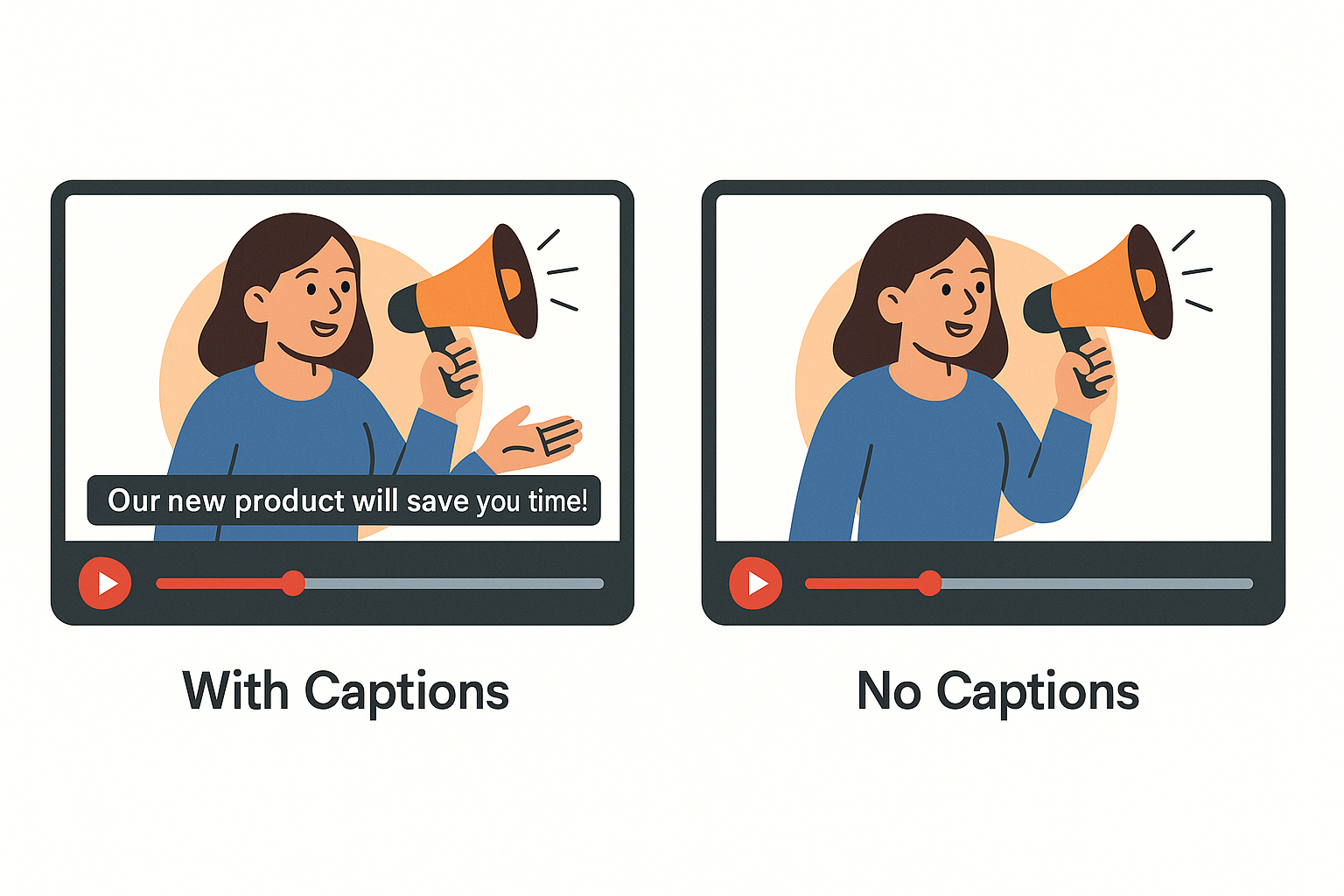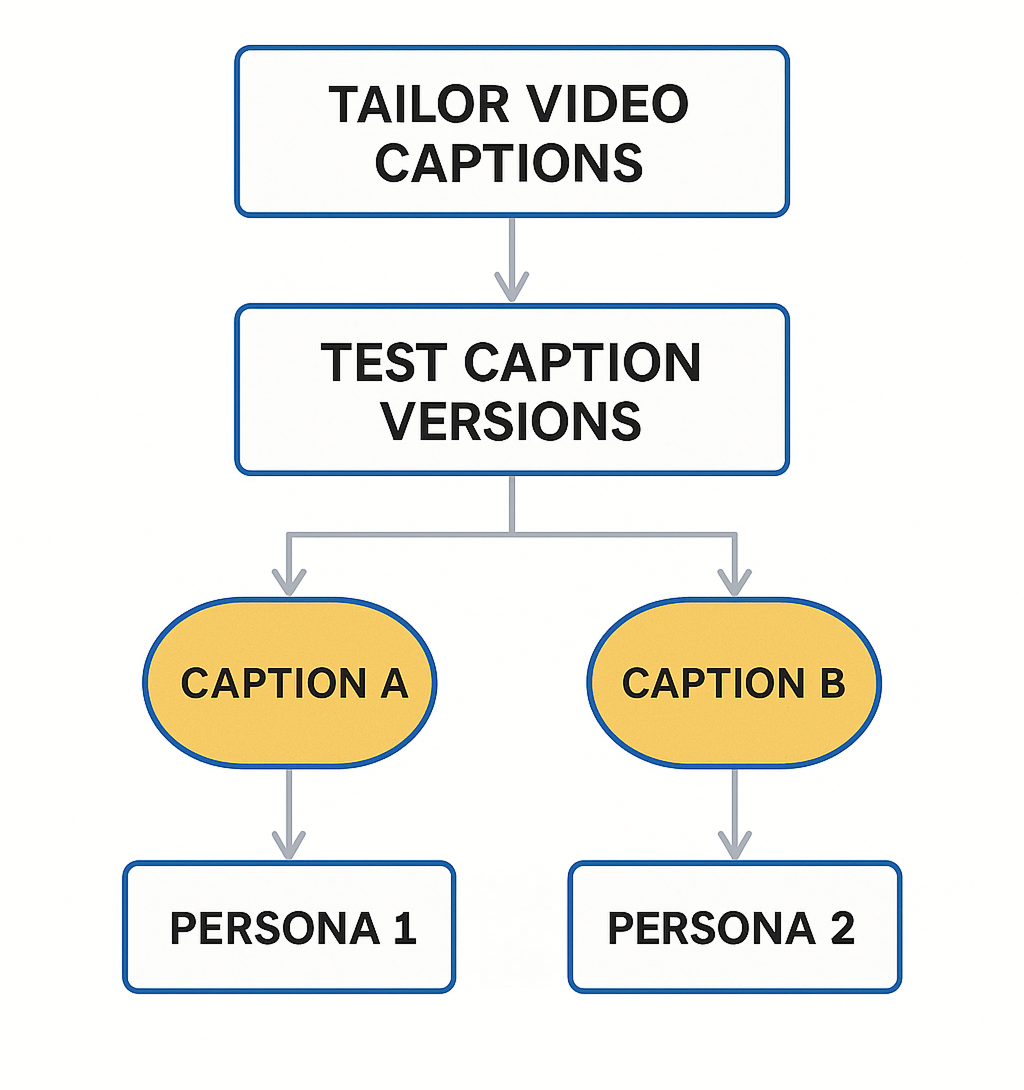Scrolling through Instagram with the sound off? You're not the only one. Most users on social platforms now default to silent viewing. That small behavior shift has massive consequences for advertisers.
According to recent data, over 80% of social video views happen on mute. Which means if your video ad needs sound to make sense, your message is probably falling flat. Subtitles and captions aren't just an accessibility feature anymore — they're a performance tool.
Let’s unpack why they matter more than ever, and how you can use them strategically.
Silent Scrollers: The New Normal
When social media videos autoplay without sound, users scan the visuals and decide within seconds whether to keep watching. If there's no on-screen text or caption to explain what's going on, most users just keep scrolling.
Even strong visuals and polished voiceovers won’t help if the message is locked behind audio. So, if you're relying on spoken content without subtitles, you're likely wasting impressions and ad spend.
To avoid this, every key message should be readable on-screen — instantly. Silent scrollers aren't going away, so your ads need to work with or without sound.
Captions Improve Message Delivery
Captions do more than just "translate" audio. They create clarity, comprehension, and connection. They visually reinforce your value proposition while making your video skimmable.

Here's what well-done subtitles can do:
-
Clarify the core message — Viewers understand your offer even when they can’t hear it. This ensures that your value proposition lands regardless of the environment.
-
Boost memory retention — When people see and read your message, it sticks better than audio alone. Think of subtitles as visual anchors.
-
Increase accessibility — Audiences with hearing impairments or language barriers can still engage, which expands your potential reach.
-
Enhance attention spans — Captions add visual rhythm to your video, helping guide the viewer’s focus.
-
Help with international reach — You can localize captions to target non-English speaking users or test regional dialects for better cultural fit.
Need help defining the right target audience for captioned ads? Use our step-by-step guide to Facebook ad targeting.
And remember, good captions aren’t just a translation — they’re part of the creative itself.
Captioned Ads = Better Performance
What if captions didn’t just help a little but helped a lot?
Here are a few performance insights:
-
Meta found that video ads with captions can increase view time by over 12% — which can dramatically affect how long users engage with your brand message.
-
A/B tests reveal that captioned video ads often deliver higher engagement rates — especially when the first three seconds include readable value props.
-
Lower CPCs and better ROAS are commonly seen in campaigns that include well-timed, on-brand subtitles that support the video narrative.
Captions also contribute to better ad relevance scores — which affects delivery, cost, and competitiveness.
If your Facebook ads aren’t converting, weak messaging visibility could be one of the silent killers. Subtitles are often the first fix that yields visible results.
Styling Matters: Don't Settle for Defaults
Facebook and Instagram offer automated captions, but they often misplace words, lag behind audio, or show up in hard-to-read colors.
Instead, take control of your text. Here are a few best practices:
-
Burn in the captions manually — Use editing tools like CapCut, VEED, or Descript to customize text color, placement, and timing. This gives you full creative control.
-
Use readable, high-contrast fonts — Think accessibility and mobile-first. White text with a black outline is popular because it stands out on nearly any background.
-
Keep each caption line short — Two lines max. This avoids overwhelming viewers and ensures the message is digested quickly.
-
Style key words differently — Use bold, underline, or color to draw attention to unique selling points or discount offers.
-
Place captions in safe zones — Always test for mobile placement. Make sure your text doesn’t get covered by platform UI or thumb zones.
And don’t forget the tone. Your captions should reflect your brand voice — whether playful, professional, or punchy.
Add Subtitles with Strategy in Mind
Not sure how to structure your messaging? Try this proven caption strategy:
-
First 3 seconds: Drop your key benefit in text, front and center. This is your make-or-break moment.
-
Middle: Reinforce value with subtitles that mirror benefit-driven visuals. Each line should support the action being shown on screen.
-
End: Include a final CTA caption that matches your button (e.g., "Learn More"). Reinforce the action you want viewers to take.
This structure helps guide viewers from curiosity to clarity to conversion. And it helps your message make sense at any playback point.
If you're launching a campaign but stuck on video scripting, check out this guide to Meta campaign objectives.
Advanced Tips for Marketers and Media Buyers
For advertisers managing high-volume ad testing or running creative variants, captions open up even more opportunities.

-
Test different caption scripts — You can run the same video visual with two different versions of captions. One version might highlight benefits; the other might use storytelling. Track performance differences.
-
Adapt captions for personas — Retarget your audience with message variants tailored to different buyer stages or segments. A subtle tweak in caption tone can boost CTR.
-
Use captions to highlight USPs or trust signals — Include social proof, awards, or guarantees directly in the subtitle flow. It builds trust without needing extra visuals.
Need new creatives fast? Try combining captions with tools from this list of top AI image and text generators. You can generate ad variations at scale without sacrificing quality.
Final Thoughts
The silent majority is growing. Attention spans are shrinking. And Meta's algorithms reward clarity.
In this environment, ignoring captions isn’t just lazy — it’s expensive.
If you're running campaigns and wondering why your impressions don’t lead to clicks, your video may be missing a silent but critical element. Go back and review your ads. Would they make sense with zero sound?
If the answer is no, you know what to fix first.
Subtitles aren't an afterthought. They're a strategic edge. Treat them like it.

